
In the mid-1970s, a couple of years before I became a professional driving instructor, I struggled to pay my bills.
 To save money, I bought an old car and renovated it myself.
To save money, I bought an old car and renovated it myself.
The renovation included re-lining the brakes, replacing wheel bearings, rebuilding the engine, refurbishing the interior and respraying the tired paintwork.
The engine rebuild was a killer! Not the work itself, but carrying the engine block up four flights of stairs to the back bedroom of my council flat (no lift) – something I definitely would be unable to do today.
After I completed the project, the car was my pride and joy for about six months – it also earned me some part-time cash working as a mini-cab driver.
But then someone flashed their headlights.
I was driving through North London when a driver flashed their headlights to give way to a car emerging from the left at a crossroad - where I was turning right.
There were two lanes, and I was in the right-hand lane, passing a queue of traffic to my left. A driver in the queue flashed a car emerging from a side road.
The car on the left emerged too fast; the driver trusted the flasher's judgement and assumed the road to their left was clear – they were busy looking to their right. The result was that my car took a broadside hit – writing it off.
 This crash taught me a harsh lesson about observation at junctions and defensive driving - I can say with virtually 100% certainty that I wouldn't have the same accident today. (It also taught me not to buy cheap insurance – my policy didn't pay out!)
This crash taught me a harsh lesson about observation at junctions and defensive driving - I can say with virtually 100% certainty that I wouldn't have the same accident today. (It also taught me not to buy cheap insurance – my policy didn't pay out!)
Flashing is often a courtesy or kindness where a driver can do their 'good deed for the day' by giving way to another – but often, it can be a misplaced act of kindness.
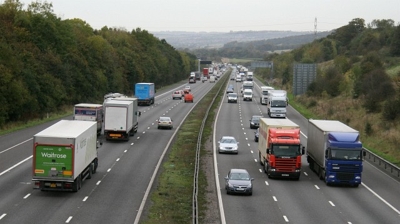 I'm unsure about the origins of flashing headlights, but they have been widely used as a courtesy signal amongst lorry drivers for many years.
I'm unsure about the origins of flashing headlights, but they have been widely used as a courtesy signal amongst lorry drivers for many years.
You could argue that when truck drivers flash it's legitimate because it forms part of truck drivers' common shared language. As such, truckers understand each other's signals.
Understanding, however, is a strange thing - can you remember a time when you thought you fully understood something but then later realised that you'd got it wrong?
The ultimate meaning of any communication lies in the message that is received - this is not always the same as the message meant by the sender - in the case of flashing headlights, this can cause confusion.
Regardless of any message you are trying to convey, the outcome will be determined by how the recipient interprets it.
For example, some continental drivers use headlights to mean "I'm coming through" - imagine the chaos if another driver interpreted this as "I'm giving way".
The 1969 copy of 'Advanced Motoring' neatly summed up the question of understanding as follows:
'The fact that a driver considers his own particular version of a signal superior to those which are authorised* would not absolve him from blame if his version were misunderstood and resulted in an accident.
This message can be applied to flashing headlights today.
* Authorised signals are those shown in the Highway Code.
The current Highway Code is clear and unambiguous about the use of flashing headlights; Rule 110 states:
'Flashing headlights. Only flash your headlights to let other road users know that you are there. Do not flash your headlights to convey any other message or intimidate other road users.'
Rule 111 adds:
'Never assume that flashing headlights is a signal inviting you to proceed. Use your own judgement and proceed carefully.'
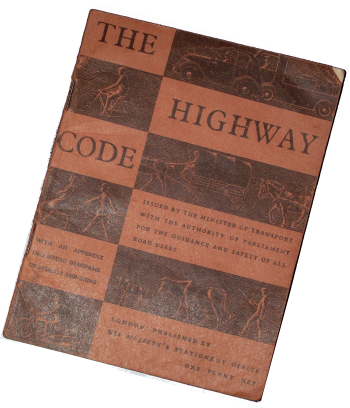 The rules quoted above are a development of a fundamental principle which has been in the Highway Code from the early days. The 1946 Highway Code (rule 36) stated:
The rules quoted above are a development of a fundamental principle which has been in the Highway Code from the early days. The 1946 Highway Code (rule 36) stated:
'Do not rely on signals to proceed given by unauthorised persons' (although, ironically, it also contained the 'I am ready to be overtaken' arm signal!).'
Flashing headlights seems to have been common practice amongst drivers from around the mid-sixties/early-seventies. The design of cars changed during that period providing a 'flasher switch' on the steering column.
The column-mounted switch made it easy to give a quick flash; before that, light switches were usually located on the dashboard with a foot-operated dip switch.
With flashing headlights just a fingertip away, the 'rules' started to take a back seat.
 Many drivers interpret flashing headlights as direct instruction. They trust the 'flasher' without thinking for themselves.
Many drivers interpret flashing headlights as direct instruction. They trust the 'flasher' without thinking for themselves.
In my crash story above, the emerging driver drove out of the side turning when 'instructed' without fully considering the potential danger - if I'd been on a motorcycle, I would probably have been killed.
If the 'flashing' driver given way without a flash, I suspect that the emerging driver would have exercised more caution.
Test it for yourself:
If you are a flasher, you can test my 'more caution' theory for yourself.
When giving way, slow down or stop without flashing.
You will probably notice that the other driver takes a bit longer to make a decision and has a good look around before committing to their manoeuvre. You might also find that some drivers just sit there and are reluctant to move without your 'permission' (or instruction!).
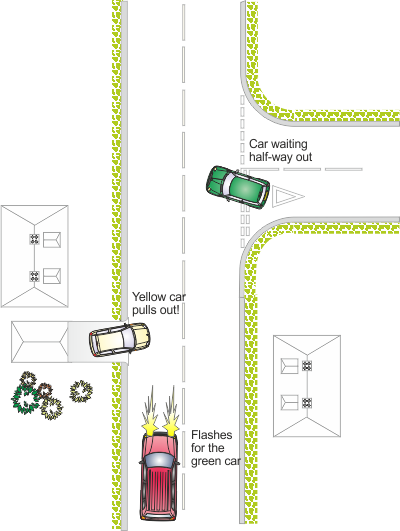 I recall a situation when I was assessing an 'advanced' driver who flashed his headlights to give way to a car emerging from the right but waiting half-way across the road. And then nearly put me through the windscreen as he braked hard to avoid the 'idiot' who appeared from a gateway on the left slightly further ahead.
I recall a situation when I was assessing an 'advanced' driver who flashed his headlights to give way to a car emerging from the right but waiting half-way across the road. And then nearly put me through the windscreen as he braked hard to avoid the 'idiot' who appeared from a gateway on the left slightly further ahead.
The 'idiot' had thought (quite reasonably) that the flash was for them!
Another situation I witnessed involved a lucky escape for a pedestrian.
A driver flashed his lights to give way to a bus that was signalling to move away from a bus stop. A pedestrian standing behind the bus ran across the road and into the path of an approaching truck.
Signals can easily be misinterpreted by people for whom they are not intended.
The pedestrian didn't see the truck because she was busy waving to thank the driver who flashed his lights to let her cross!
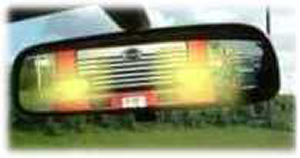 Aggressive flashers come up behind you on fast-moving motorways and dual-carriageways telling you to get out of the way.
Aggressive flashers come up behind you on fast-moving motorways and dual-carriageways telling you to get out of the way.
I have even heard advanced driving instructors explaining how this can be done safely to get a slow-moving driver to move over. My thoughts on this are that there is nothing 'advanced' about aggressive driving.
Sometimes drivers might need a reminder that you are there. For example, big trucks can take ages to build momentum on even a slight hill - if they are held up behind a slow car in lane two when lane one is empty, a quick flash might be legitimate as a "Look, I'm here" signal... But not aggressive flashing - this can intimidate drivers to the point of risking an accident or provoke road rage.
 The only time 'Aggressive flashing' might be justified is when used by emergency vehicles and executed as advised in Roadcraft (The police Drivers Manual). But it doesn't always work.
The only time 'Aggressive flashing' might be justified is when used by emergency vehicles and executed as advised in Roadcraft (The police Drivers Manual). But it doesn't always work.
I remember dark evening on the M62 when I was travelling as an observer in a police car - hurtling along lane-three at about 120 mph we had more flashing lights than Blackpool Illuminations, but there were still drivers ahead who were totally oblivious to our presence! I'm sure this is a common experience for police drivers.
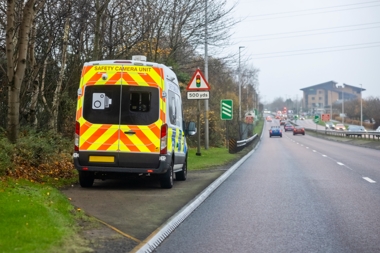 Some drivers flash their headlights to warn other drivers about speed traps.
Some drivers flash their headlights to warn other drivers about speed traps.
They might consider that they are being helpful, and from a road safety point of view, perhaps they are – if the oncoming driver slows down. But these warnings are illegal.
Rule 110 of the Highway Code states: "Only flash your headlights to let other road users know that you are there. Do not flash your headlights to convey any other message or intimidate other road users."
The Code can be used as evidence in any court proceedings, but alerting other drivers to speed cameras or police vehicles could also breach Section 89 of the Police Act 1997, which carries a maximum penalty of £1,000. Part of the act reads:
"Any person who resists or wilfully obstructs a constable in the execution of his duty, or a person assisting a constable in the execution of his duty, shall be guilty of an offence and liable on summary conviction to imprisonment for a term not exceeding one month or to a fine not exceeding level 3 on the standard scale, or to both."
 In 2020, West Yorkshire Police posted (on Facebook) information about drivers who flash to warn others:
In 2020, West Yorkshire Police posted (on Facebook) information about drivers who flash to warn others:
"We recorded the statistics of speeds and dealt with those who were exceeding the limit. Officers also had to intervene and deal with a member of the public who was spotted by officers signalling to other road users of our presence."
The post went on to say: "This kind of behaviour not only hampers the good work that staff and officers do to reduce speeding motorists, but their actions are also reckless as it can result in other motorists slamming on their brakes & causing an accident."
Not flashing - but related: Sharing speed trap locations on social media could be big trouble!
Perhaps having read the information above, you might conclude that flashing headlights can cause as many problems as they solve, with potentially lethal consequences. So how should you respond to those who flash you?
The DVSA manual 'Driving, the essential skills' offers sound advice. It states that: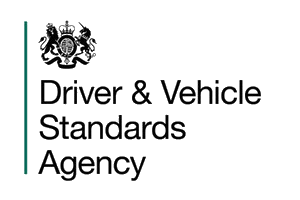
Some drivers flash their headlights for a variety of reasons, including
Inviting you to pass before them
Thanking you for your courtesy
Warning you of some fault with your vehicle
Telling you your headlights are dazzling them
When other drivers flash their headlights, the signal
Might not mean what you think
Might not be intended for you
Make sure that you know that intention before you act on the signal
Remember, flashing of headlamps might not be an invitation. The other driver might have flashed someone else or have flashed accidentally
With the DVSA advice in mind, ask yourself these questions if someone flashes you:
What's the other driver trying to tell me?
If I move, will it be safe?
Is the signal for me or another road user?
Am I causing a hold-up by staying where I am?
Is the other driver signalling, or were those headlights flashed accidentally?
Have I forgotten to turn my lights on?
Have I forgotten to turn my lights off?
Am I speeding?
It might seem like a lot to think about, but it only takes a second to cover all of these things with a quick look around.
With regard to the last one, you shouldn't be speeding – but it's not illegal to slow down if you are!
This photo shows a truck driver coming down a steep hill and approaching a low bridge - flashing his headlights.
Is he giving way? Or following the rules of using headlights to say 'I am here'?
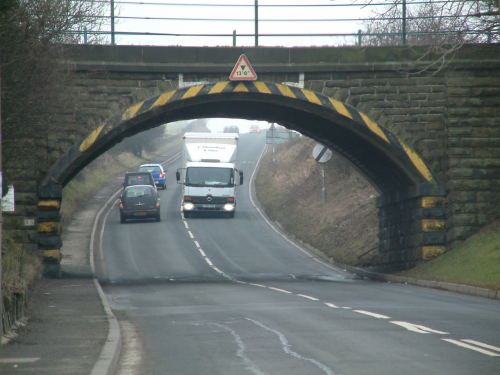
The answer can be seen in this second photo taken a couple of seconds later.
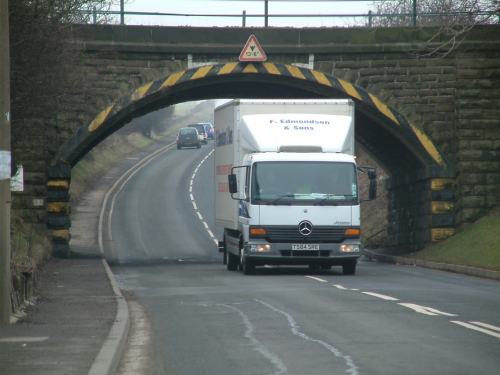
The driver was signalling to say, 'Look, I'm coming through'.
If I'd assumed that he was giving way, I might not have been writing this now!
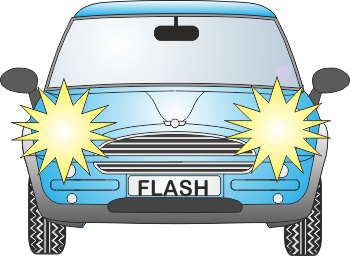 There are legitimate uses for flashing headlights.
There are legitimate uses for flashing headlights.
For example, flashing from dipped to full-beam can warn of your presence on bends and at junctions after dark or warn of hidden danger during daylight hours.
A quick flash before overtaking can warn the driver ahead that you are there and about to come through.
Beware, however, that a flash before overtaking might attract a two-fingered gesture from the driver ahead! But at least you will know they've seen you. In fact, their attitude might deter you from an otherwise safe overtaking manoeuvre that could be made dangerous if they chose to do something stupid.
You might not get home quick as a flash. But you'll arrive alive.